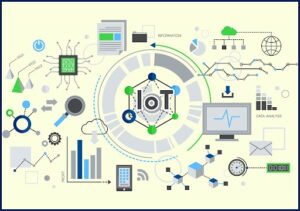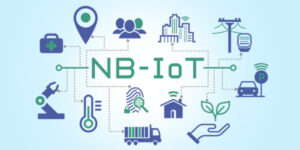The Web of Things (WoT) is a set of standards developed by the World Wide Web Consortium (W3C) to improve the interoperability, decentralisation and accessibility of IoT
WoT is a critical stage in the evolution of the Internet of Things. It is a new technology that enables scalable connectivity in IoT solutions
Web of Things (WoT) is a set of standards that guides the Internet of Things (IoT). The former works to improve the functionality of the latter, adding to the scalability of the technology. The importance of WoT becomes more prominent due to IoT’s ability to enable devices to communicate with the help of real-time data, becoming a game-changer for many industries.
The Internet of Things (IoT) has revolutionised every industry and extended the internet’s reach beyond computers and smartphones to a wide range of systems and environments. IoT is a network of interconnected devices that can send and receive useful data over the internet. Connecting the devices to the internet and sensors transforms them into digitally intelligent and smarter machines.
On the other hand, the Web of Things (WoT) is a set of standards developed by the World Wide Web Consortium (W3C) to improve the interoperability, decentralisation and accessibility of IoT. The WoT architecture is an attempt to organise the vast universe of web protocols and tools into a useful framework for connecting any device or object to the internet.
IoT is the path that data takes from one location to another. The Internet of Things has no control over the direction or purpose of the data sent. This is one of its shortcomings. IoT provides a means for all connected devices to transmit and receive information, but it does not control what is shared where.
WoT is the application layer that adds functionally on top of the IoT layer. WoT is not an alternative to IoT, rather, it attempts to improve the latter. WoT is the mechanism that directs the data sent using IoT to its respective destinations. This is accomplished by establishing standard definitions and models for representing devices on the Internet.
The Internet of Things has been nothing short of a boon. It has enabled devices to communicate with one another and send real-time data to stakeholders. Many industries have recovered from massive financial losses thanks to IoT.
WoT is a critical stage in the evolution of the Internet of Things. It is a new technology that enables scalable connectivity in IoT solutions. Without WoT, IoT is useless. The standards set by W3C for WoT are built on several pillars that include Binding Templates, Scripting API, Thing Description, Security and Privacy Guidelines.
Meanwhile, the ability of IoT to operate successfully is supported by four pillars: device, data, analytics and connectivity. IoT collects and processes massive amounts of data, making it difficult to monitor how data is processed and obtain consent for that processing. As a result, the data transferred is encrypted using cutting-edge software. Only the concerned stakeholder on the other end can access the encrypted data.












